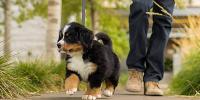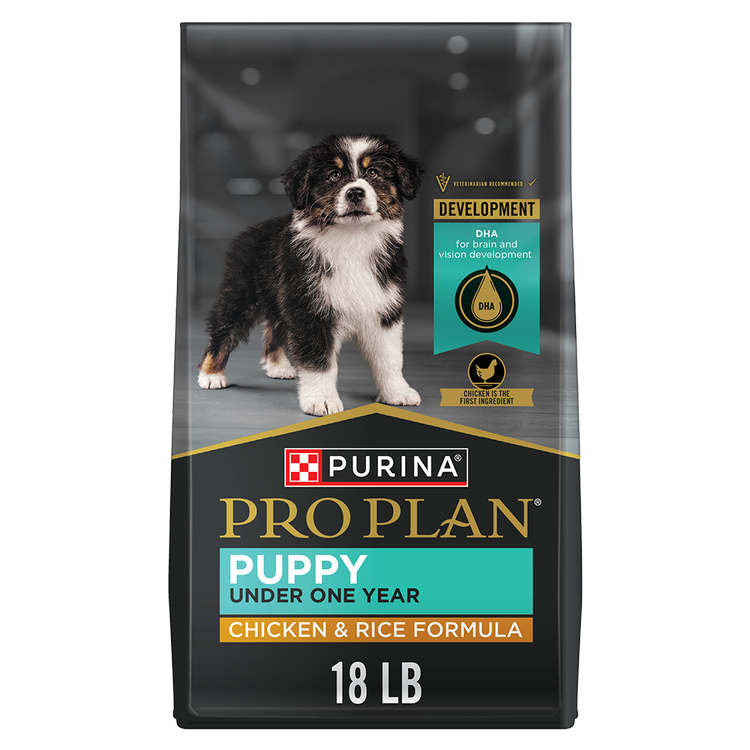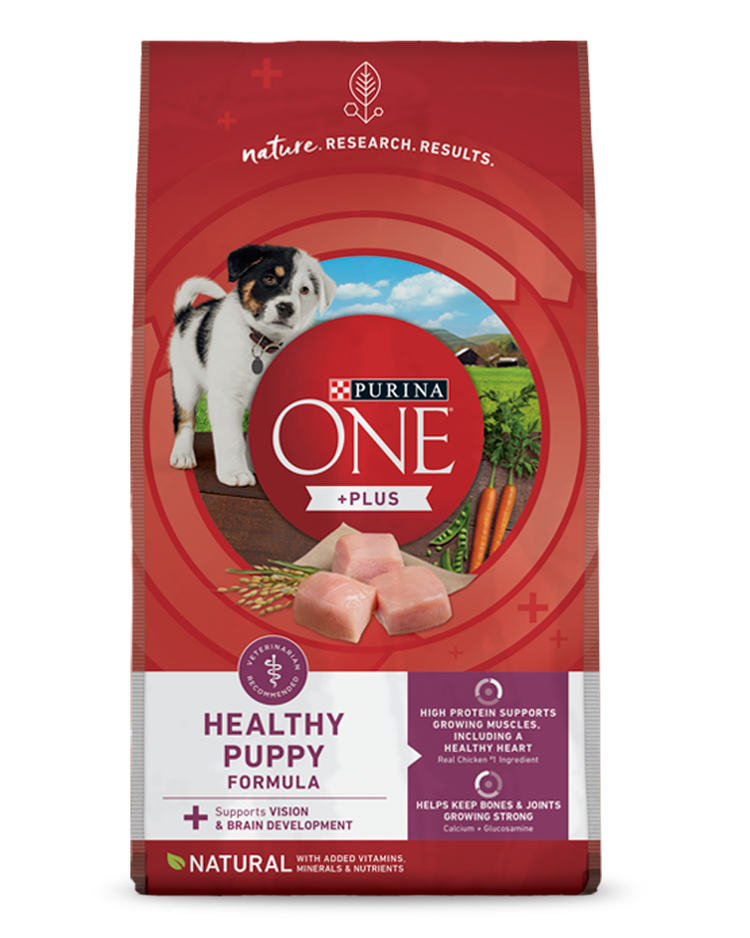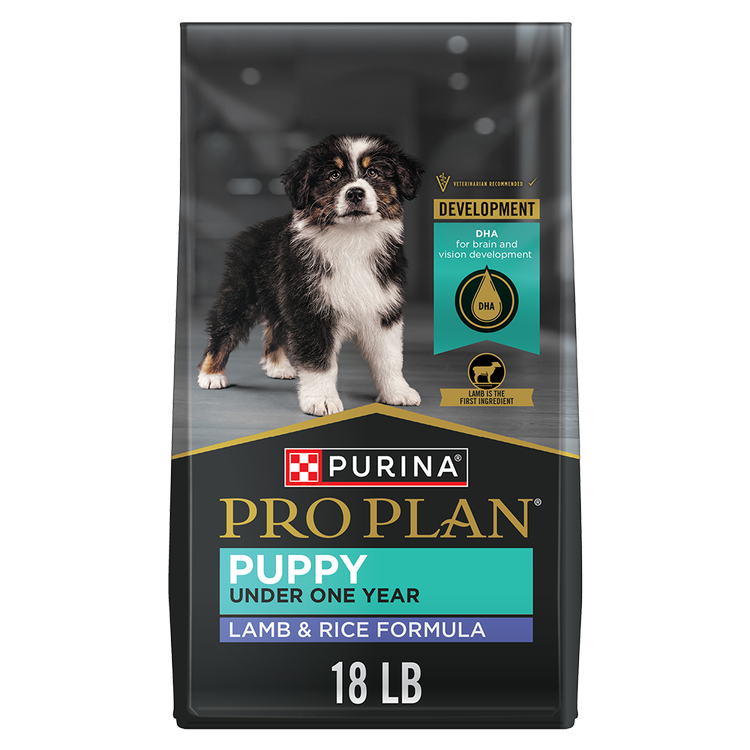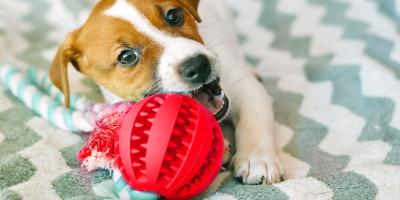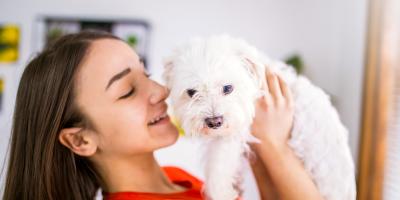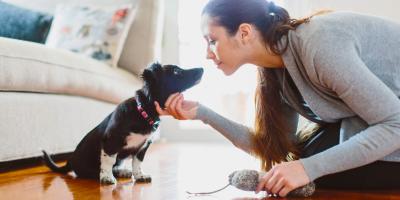When you get a new puppy, all you want to do is cuddle him and watch as he explores his new home. To prevent undesirable behaviors like chewing or barking, though, you need to start training as soon as possible.
Early and consistent training ensures he develops good manners, minimizing bad behavior. Plus, learning basic commands like “come” and “stay” does more than make your puppy a polite member of society. Those commands could save his life in a dangerous situation.
Purina behaviorists believe positive reinforcement is the most effective puppy training technique. Your puppy will learn to associate good behavior with praise, affection or treats. Punishment as a form of training may lead to stress and anxiety, which may weaken your relationship with him. The following puppy training tips will encourage a strong bond, keep your new four-legged friend on his best behavior and keep him safe.
5 Puppy Training Tips
1. Be Consistent
Consistency is key with any type of obedience training. Every time your pup does something desirable (even if it’s not during a training session), reward him with enthusiastic praise and a treat on occasion.
When he does something undesirable, such as digging a hole in the yard, give him a loud and firm “No.” Remember, dogs can’t associate reprimands with something they did a few minutes ago, let alone an hour or more ago.
Catching him in the act and correcting the behavior immediately is the best way to teach him right from wrong.
2. Redirect Inappropriate Behavior
Get your puppy’s attention when he does something inappropriate. You can use a loud and firm “No,” or try using a low-pitched, serious sound like “Ahhh.”
When he looks at you, give him an acceptable alternative behavior or distraction. For example, if you catch him chewing on your shoe, get his attention and give him a chew toy instead.
3. Praise Correct Behavior
When he shifts his attention to the chew toy, praise his behavior. Use an upbeat, high-pitched voice and say “Good boy!” Reward him with calm petting or a treat, if appropriate.
Whether you’re in the middle of a training session or not, always praise your puppy for correct behavior. This reinforces his good manners.
4. Use Treats
It’s a good idea to start your puppy training with a tasty treat as a reward for good behavior. Over time, lessen the amount of treats you use and increase the amount of verbal and physical praise as a reward.
This makes your dog more inclined to behave well just to get a pet or a “Good boy!” rather than only behaving when there’s the promise of a snack.
5. End on a Positive Note
Always end your training sessions on a positive note. If your puppy didn’t quite master “stay” during this session, go back to something he does know, like “sit.” When he sits, give him a reward and lots of praise.
Ending on a positive note keeps your puppy excited for his next training session, rather than feeling discouraged.
For more tips and tricks on how to train a puppy, see some of the other advice Purina behaviorists offer here. If undesirable behaviors become problematic, you can also consult with your veterinarian. They can provide additional tips for correcting those behaviors.

Be Rewarded for Your Purina Purchases
Earn and redeem points for Purina products with myPurina app.


